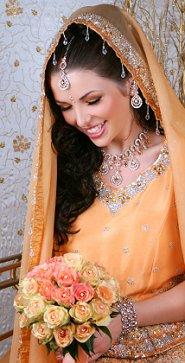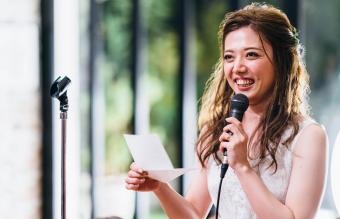
Wedding dresses for a traditional Pakistani ceremony are beautifully unique. These gowns often incorporate vibrant colors and embellishments full of sparkle into the overall stunning design.
Centuries of Tradition
A Pakistani wedding is the ultimate celebration of love in this rich and ancient culture. Traditionally, a typical wedding includes four different ceremonies on different days. In each, the bride wears something different, providing a wide array of Pakistani wedding dresses for guests to admire. Below is a short description of each aspect of every day included in Pakistan's wedding traditions, as well as details in regards to the bride's attire.
Mehndi
Mehndi is a ceremony that takes place one or two days before the main wedding. The families of the bride and groom bring dessert-themed foods and henna for the opposing side, and the betrothed couple celebrates separately, each with friends and family.
The wedding dress for this day will typically be either a green dress or one with yellow and orange fabrics. Makeup is very simple, and this dress is beautiful, yet not over the top.
Dolki
This ceremony includes singing traditional Pakistani wedding songs and celebrating with percussion instruments. Here, a Pakistani bride will almost always wear a traditional yellow outfit. This is complimented with floral henna designs, sometimes including the groom's name worked into the artwork. A bride will also wear a veil with her yellow wedding dress.
Nikah and Shaadi
This is the official Islamic marriage ceremony that commences in the home o the bride. Family and friends attend this, and the men and women are often separated. After this, Shaadi takes place. This is the Pakistani form of a wedding reception. Here, the bride wears a gharara, which consists of a purple, red or pink tunic that ends above the knee, a veil and wide-legged pants.

It is all decorated with Zari, a gold and silver wire woven directly into the fabric, and Zardozi, which is another variant of typical embroidery. Many other bright colors may be incorporated into this bridal attire, but it completely depends upon the bride's choosing. No matter what color scheme is chosen, the Pakistani wedding gowns and outfits worn on this day include a large amount of gold jewelry.
Walima
On this final day, the couple throws a dinner party together as officially husband and wife. Here a bride will wear, once again, plenty of gold jewelry paired with a dress in varying pastel shades.
The Beauty of Pakistani Wedding Dresses
Though the Islamic religion and Pakistani traditions have a distinct level of humbleness about them, bridal attire in this region is nothing short of gorgeous. With vibrant colors, intricate detailing, and exemplary brides full of beauty, the Pakistani wedding attire is to be admired for its creativity and deep roots in history. While the traditions vary within each sub-group, each will agree that the garments of the bride are of the utmost importance during the planning stages of the wedding.
Where to Buy
If you are a Pakistani bride marrying in the United States, you can still have your traditional dream gown, thanks to specialty shops found online. Hina's Boutique is one such website, selling Pakistani wedding dresses as well as formal and semi-formal attire that is culturally appropriate. Meenakar is another great site that will lead you to some of the latest in Pakistani fashions, including wedding gowns for all phases of the marriage ceremony. If you happen to live in an area where there are some Pakistan-influenced shops, you may be able to find some wedding dresses or receive a personal referral as to where to find a physical location to go try some on. For example, on Shattuck Boulevard in Berkeley, California, there is a Pakistani shop that sells such items. Ask around or check your yellow pages to see if a centuries-old tradition in fashion happens to be just a neighborhood or two over.







